
 |
Home | Dhaulagiri Main | Contact |
Updated: October 2011. Click on an image to see the FULL size with a caption.
The following reference information is included:
My rating scale:
 Excellent ;
Excellent ;
 Very Good ;
Very Good ;
 Good ;
Good ;
 Fair ;
Fair ;
 Poor.
Poor.
For trekking up the Kali Gandaki Valley with excellent vierws of Dhaulagiri, see: Annapurna References.
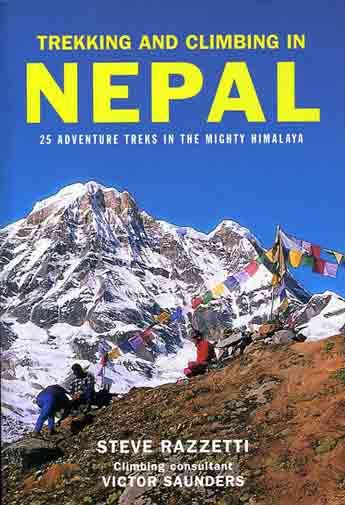
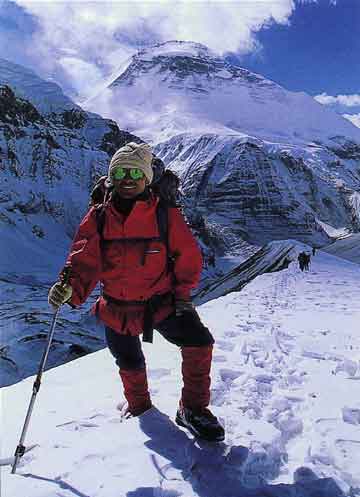

by Steve Razzetti. Published 2001. This book contains basic information on 25 treks in Nepal, including Humla to Mount Kailash, the Annapurna Sanctuary and Circuit, the Dhaulagiri Circuit, Jomsom to Mustang, Around Manaslu, Rolwaling, Gokyo and Everest, Makalu, and Kangchenjunga. It also contains descriptions of climbing 12 trekking peaks, including Pisang, Chulu, Ramdung, Lobuche East, Imja Tse, and Mera. The front cover is Annapurna South.
The book includes four pages on the Dhaulagiri Circuit, two pages on a Dhaulagiri Extension from Phala Gaon to Kaphe Khola, five pages on Inner Dolpo, and three pages on a trek North of Dhaulagiri.
The trekking route descriptions and maps are basic. The photos are very good.
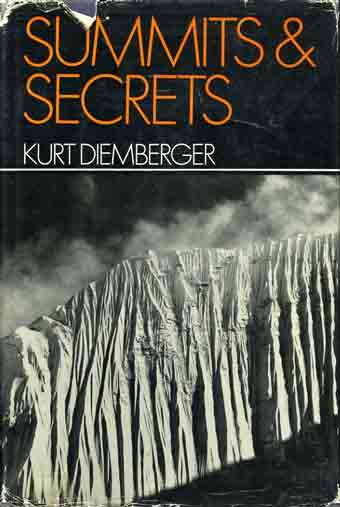
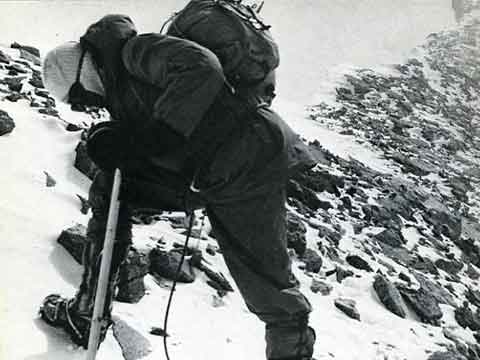

by Kurt Diemberger. Published 1971. One of Michael Chessler's Top 100 Mountaineering Books. The autobiography of his early years with brief stories of many of his climbs, including the Matterhorn, the first ascent of Broad Peak with Hermann Buhl in 1958 followed by Buhl's tragic death on Chogolisa, the Eiger, the Peuterey Ridge on Mont Blanc, the first ascent of Dhaulagiri in 1960, and Tirich Mir (West IV) in 1967. The front cover is the Southeast ridge of Dhaulagiri. There are 56 pages of b/w photos.
A 34-page chapter describes the fist ascent of Dhaulagiri by Diemberger, Ernst Forrer, Albin Schelbert, Peter Diener, Nawang Dorje and Nima Dorje on May 13, 1960 via the Northeast ridge. Ten days later Michael Vaucher and Hugo Weber also made it to the summit.
"... simple beyond words, mighty, unbelievably beautiful - Dhaulagiri. ... This was the tremendous, the inaccessible mountain. I was shattered by what I saw. And the nearer we got to it, the smaller we felt." ... "We had been battling with storm and tempest for a whole month on this mountain, determined to get to the top, sustaining setback after setback, coming back at it again and again ... and now, at last, we were here, on the summit."
I really enjoy reading Diemberger's books, which have an almost lyrical writing style that expresses his love for life and climbing. I found this book not as good as his others, maybe because the stories had to be kept brief.
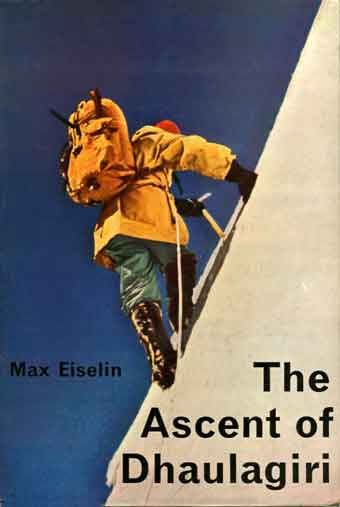
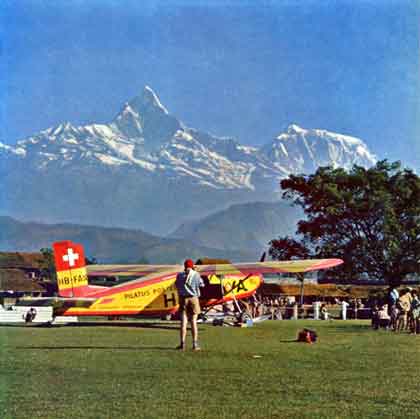
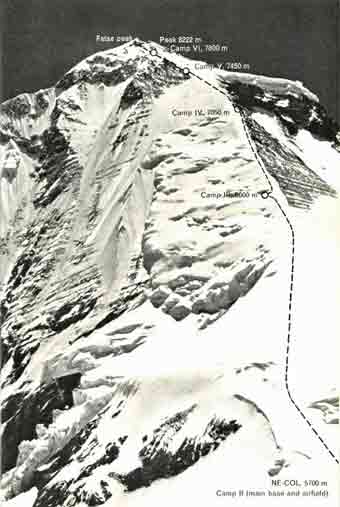
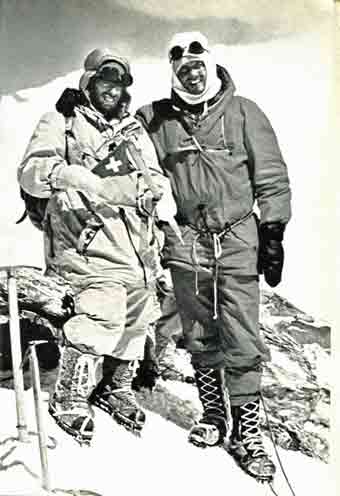

by Max Eiselin. First Published in English in 1961. The leader of the 13-member Swiss Expedition in 1960 tells the story of the first ascent of Dhaulagiri from his perspective. At the time Dhaulagiri was the highest unclimbed peak in the world. Previous expeditions had tried the Pear route, but Eiselin decided to try the North East Ridge. The cover is Dhaulagiri climbing between Camps 2 and 3. There are 5 pages of colour photos and 24 pages of b/w photos. Some of the b/w photos are available in colour at summitpost.org.
Because the author's main role was to ensure that supplies were available for the climbers, there isn't a lot of climbing in the book. Eiselin decided to carry everything (climbers, Sherpas, and supplies) to the mountain with an airplane. The Pilatus-Porter was named the Yeti and flown by Emil Wick. This worked well with repeated flights from Pokhara to the Dambush Pass at 5200m. Emil Wick: "I can guarantee a good landing when visibility is good, even in a strong wind". The engine broke down and replacement parts had to be flown in from Switzerland. The plane crashed trying to take off from Dambush Pass when the rubber grip of the column came off in the pilots hands.
Kurt Diemberger, Ernst Forrer, Albin Schelbert, Peter Diener, Nawang Dorje and Nima Dorje reached the summit of Dhaulagiri on May 13, 1960 via the Northeast ridge. Peter: "There was still no wind and only a few small clouds drifted up from the south, which almost at once dissolved. Five hands were stretched out to me ... the notorious Dhaulagiri weather was having an off-day for once. Today was our lucky day." Ten days later Michael Vaucher and Hugo Weber also made it to the summit.
Although the ferrying of loads by airplane occupies over two thirds of the book, I found it very interesting. The photos are very good and help bring the story to life.
Dhaulagiri is featured only in a few books. Here are my favourites:



by Maurice Herzog. First published in English in 1952. My second favourite Mountaineering book of all time! One of Michael Chessler's Top 100 Mountaineering Books. This is the most widely-read and influential mountaineering book ever published. Annapurna was the first 8000m mountain to be climbed, with Herzog becoming a national hero. I have two versions of the book - New York 1953 (cover shown) and London 1952. Both books have 4 pages of colour photos, 24 pages of b/w photos, and an 8-page fold out map with a b/w photo. However, the New York book has 11 photos not in the London, and the London book has 10 photos not in the New York.
Because the maps at the time were incorrect, the team initially floundered looking for a route to either Dhaulagiri or Annapurna. Deciding that Dhaulagiri was too difficult, they found their way to the North Face of Annapurna. They quickly, and luckily, raced up the mountain. On June 3, 1950 Maurice Herzog and Louis Lachenal reached the summit of Annapurna without oxygen.
Dhaulagiri Northeast ridge: "No one will ever get up it - it's bare ice and the angle is so steep that handholds would have to be cut". Dhaulagiri Southeast ridge: "To begin with, it's incredibly long, it's all very high up, and above all it's technically very difficult: great walls and towers of ice, some rock, broken ground, gendarmes - there's no end to it." Dhaulagiri South Face: "A monstrous slope, several miles high, and without a break."
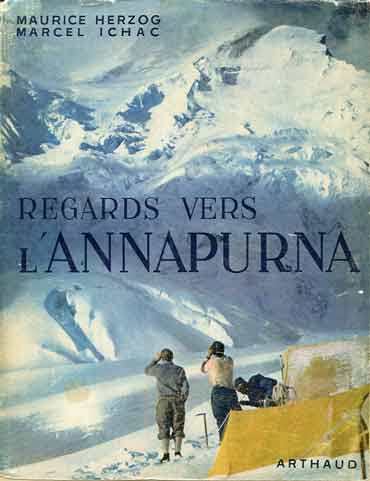
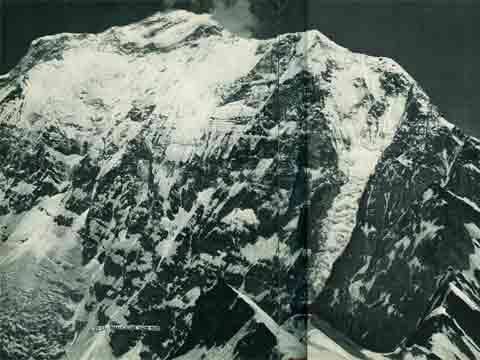
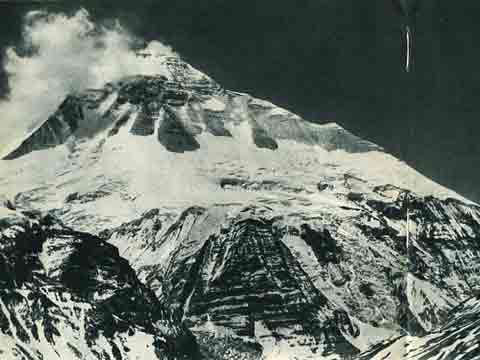

Most photos by Marcel Ichac, text by Maurice Herzog. Published 1951. In French. Medium-sized soft cover photo book of the 1950 French expedition that made the first ascent of Annapurna. There are many photos not in Maurice Herzog's book Annapurna. There is a folding map of the area included. There are 13 colour photos and 71 b/w photos. The cover is Annapurna North Face.
Photos include Kathmandu, the trek in, trying to find a route for Dhaulagiri, crossing Tilicho Lake to Manang and returning via Muktinath and Jharkot, the climb of Annapurna North Face and the evacuation and return.
This is a perfect companion book to Maurice Herzog's Annapurna, providing many more photos to help you visualize the story. The photos are excellent. The text is brief.
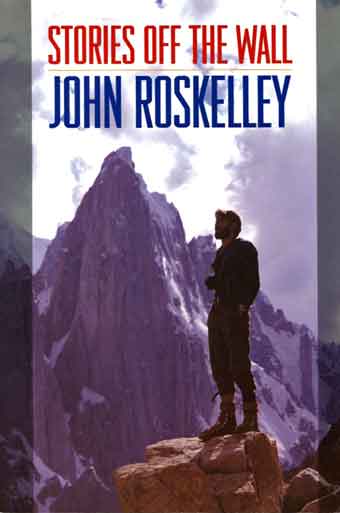
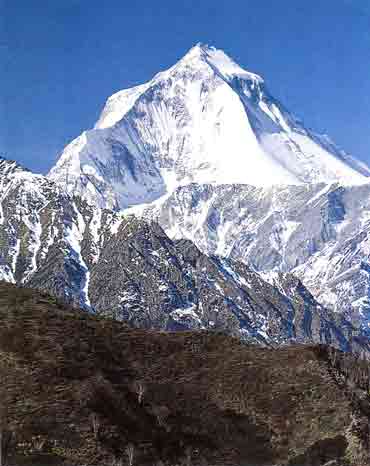

by John Roskelley. Published 1993. An autobiography with brief stories of many of Roskelley's climbs, including Yosemite 1970, Dhaulagiri 1973, the Russian Pamirs 1974, the Eiger 1974, Mount Bourgeau in Banff National Park 1975, Uli Biaho 1979, Makalu West Pillar 1980, Everest West Ridge 1983, and Denali 1992. There are 16 pages of colour photos, 12 pages of b/w photos, and 13 bw photos in-line with text.
The 13-page chapter on Dhaulagiri briefly describes the third ascent of Dhaulagiri by Roskelley, Lou Reichardt and Sherpa Nawang Samden on May 12, 1973 via the Northeast ridge. There is a 1-page colour photo and two pages of b/w photos.
"Was the summit worth the price of flesh? Had I gone too far in the quest for something so intangible? No. The summit was only an end to the means. I wanted Dhaulagiri if only because mountaineering is the process of finishing what one begins."
I really like the writing style, honest, humorous and thoughtful.
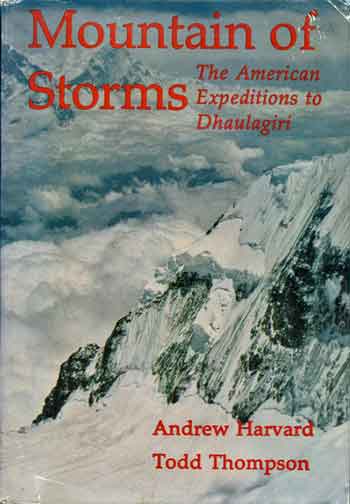
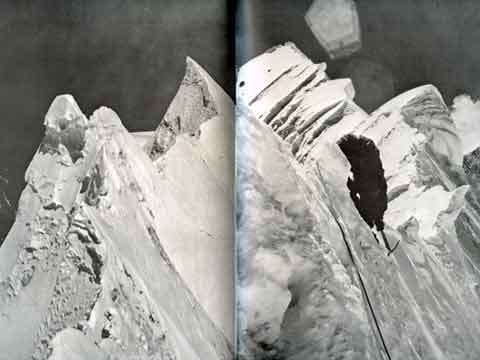
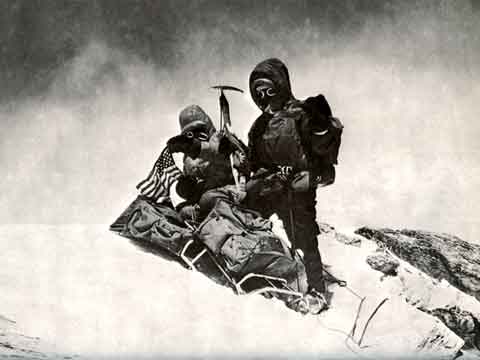

by Andrew Harvard and Todd Thompson. Published 1974. The books starts with the 1969 American Dhaulagiri Expedition that ended in tragedy on April 28 when an avalanche killed seven members of the team on the East Dhaulagiri Glacier. Most of the book describes the successful climb of Dhaulagiri in 1973. There are 16 pages of colour photos and 54 pages of b/w photos.
The 1973 expedition initially wanted to climb Dhaulagiri via the Southeast Ridge. After spending 10 days climbing up the steep wall, they found: "The ridge crest was sharp, steep ice, corniced here and there, as far along it as he could see in both directions".
They then decided to climb the normal route. After suffering two weeks of wind and storms, John Roskelley, Lou Reichardt and Ngawang Samden reached the summit on May 12, 1973.
The photos are very good and help bring the boring story to life. I especially liked the photos of the airplane swooping low near the glacier to drop loads. The story is very simple and told in a matter-of-fact way, and eh, a bit boring.
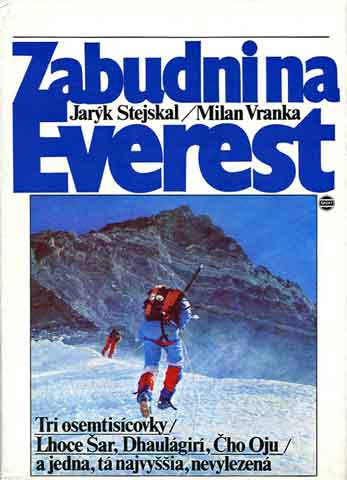
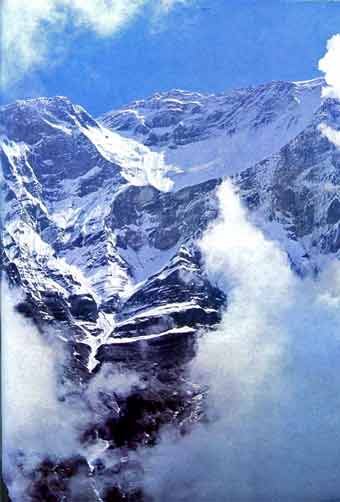
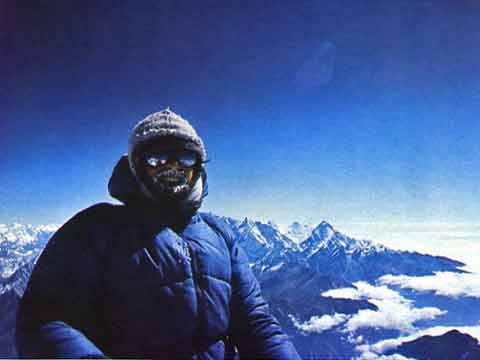

by Jaryk Stejskal and Milan Vranka. Published 1989 in Slovak. This book describes the first ascent of Lhotse Shar in May 1984, the first ascent of Dhaulagiri West Face in October 1984, an alpine winter ascent of Cho Oyu in December 1985, and an attempt on Everest in Spring 1987. There are 32 pages of colour photos, 14 pages of bw photos, 56 bw photos in-line with text, and 2 maps.
In the fall of 1984, a 20-person Czech-Slovak team tackled the 4500m Dhaulagiri West Face that rivals Nanga Parbat's Rupal face as the highest mountain wall in the world. After an epic 60-day climb, Karel Jakes, Jan Simon and Jaryk Stejskal completed the first ascent of the Dhaulagiri West face and Northwest Ridge on October 23, 1984. Simon, who had climbed ahead of the others, and descended first, was killed on the descent. There are 8 pages of colour photos, 4 pages of bw photos, 20 bw photos in-line with text, and 1 map.
Even if you can't read Slovak, the photos are very good.
Dhaulagiri is also featured in many general mountaineering books. Here are my favourites:
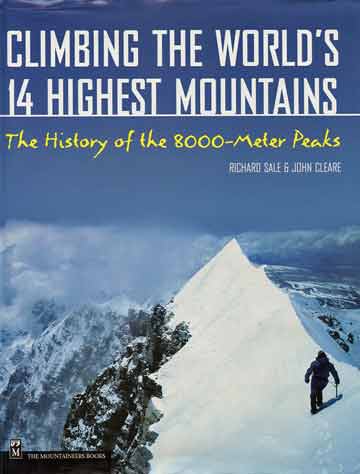
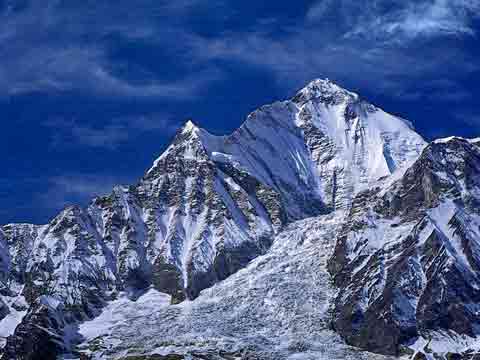

by Richard Sale, John Cleare ((Photographer). Published 2000. Highly recommended! The book details the exploration, first ascent, and other major ascents of all 14 8000m peaks, including spectacular photos.


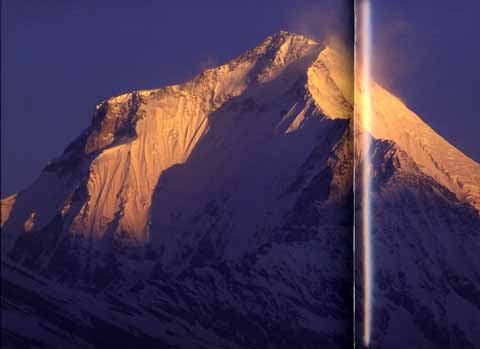

by Simone Moro. Published 2008. In Italian and English. This coffee-table size book features excellent photos from all 14 8000m peaks. Each 8000m peak has a brief history, a photo of each face showing the climbing routes, and lots of excellent photos.
There are 9 pages on Dhaulagiri. Simone Moro's attempt on Dhaulagiri in 1996 was stopped at 7200m.
The photos and route diagrams are excellent.
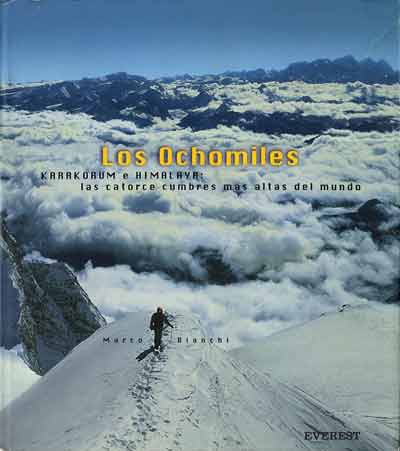
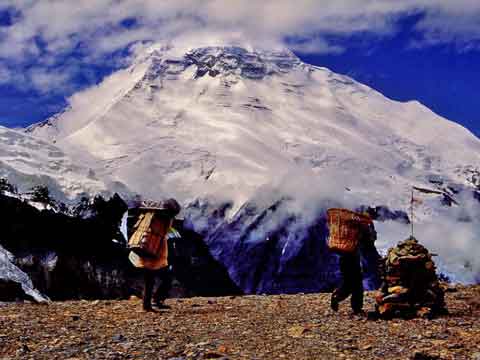

by Marco Bianchi. Published 2003 in Spanish. Although the title claims to be the 14 highest summits in the world, this beautiful, large-format photo book really focuses on the seven mountains the author climbed. The text is in Spanish, but the photos transcend language. The front cover is Shishapangma.
After attempts on Makalu in 1986 and Cho Oyu in 1989, Bianchi summitted seven of the 14 8000m peaks: Manaslu Sept. 28 1992 via Northeast Face, Broad Peak July 6 1993 via Normal route, Cho Oyu Sept. 18 1993 via West Ridge, Shishapangma Oct. 6 1993 via Southwest Face, Dhaulagiri Sept. 25 1994 via Northeast Ridge, Everest May 12 1995 via Northeast Ridge, and K2 Aug. 10 1996 via North Ridge.
There are two pages of the approach, and 10 pages on Dhaulagiri from his climb of the Northeast Ridge. The photos are excellent.
You can preview many of the photos at cuboimages.it by searching for Dhaulagiri.
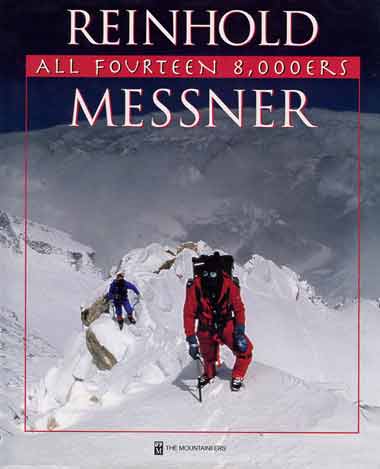
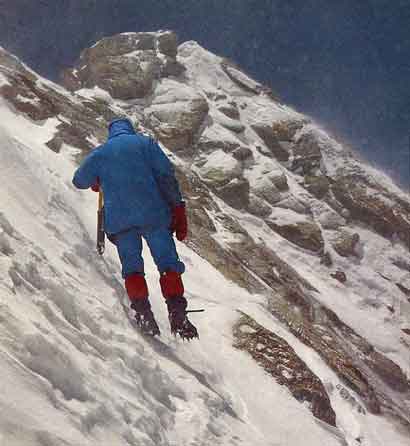

by Reinhold Messner. Published 1999. One of Michael Chessler's Top 100 Mountaineering Books. This book details Messner's ascents of all 14 8000m peaks documented with his photos. He also includes route diagrams and some basic history of the first few ascents. Messner was the first climber to summit all 14 mountains over 8000 metres in height, beginning with Nanga Parbat on June 27, 1970 and finishing with Lhotse on October 16, 1986. The cover photo is on the ascent of Kangchenjunga.
On May 15, 1985 Messner and Hans Kammerlander completed the Northeast Ridge of Dhaulagiri.
The photos are very good.
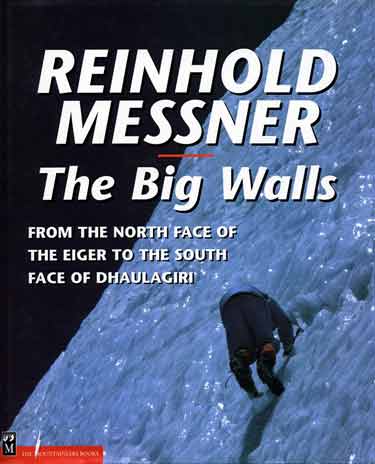
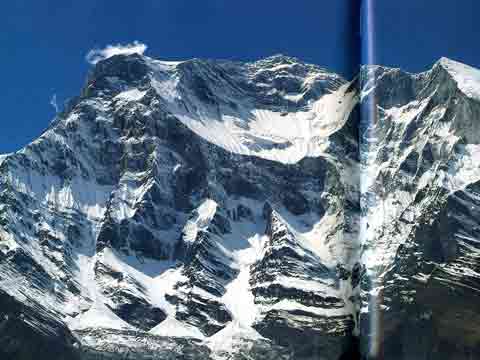

by Reinhold Messner. Revised in 2001. Messner briefly details the big mountain walls in the world in the Himalayas, the Karakorum, the Alps, South America, Alaska and the Caucasus.
The book features two routes on Dhaulagiri. The first is Dhaulagiri South Face with a special 7-page section detailing Messner's attempt and a successful ascent by Tomaz Humar, a 2-page photo, another photo, and two pages on climbing the face.
The second is Dhaulagiri West Face with two pages on climbing the face and two additional photos, including the back cover.
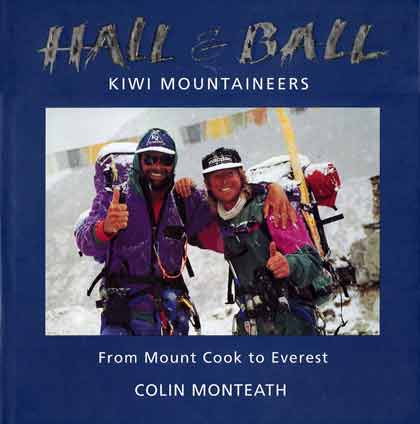
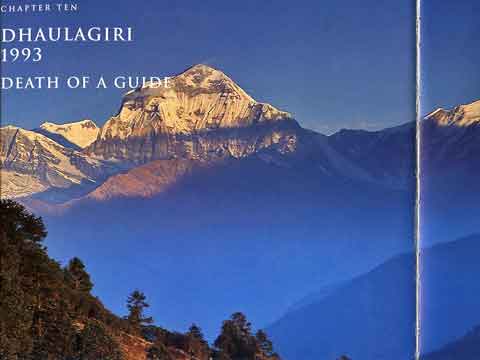
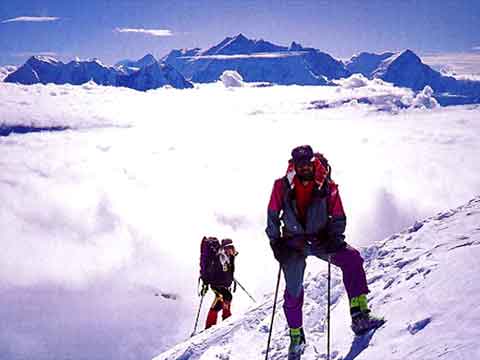

by Colin Monteath. Published 1997. Introduction: They will perhaps be best remembered for leading 40 climbers to the top of Everest during five expeditions before the 1996 tragedy on the mountain. ... Friends say Ball was flamboyant, Hall was more serious, private. Ball provided the spark, Hall the vision.
In addition to the big climbs on Everest, K2, Dhaulagiri, Lhotse, Cho Oyu, and Makalu, the book also profiles their climbs on Mount Cook, Antarctica, Pik Kommunizma, and Ama Dablam. After their first ascent on Everest they climbed the 7 summits in only 7 months.
The chapter on Dhaulagiri is 8 pages with some great photos. On October 6 1993 Gary Ball died of pulmonary edema at 6500m on the Northeast Ridge of Dhaulagiri. He died in Rob Hall's arms. Two days later, a devastated Hall lowered the body of his climbing partner and friend into a crevasse on the slopes of Dhaulagiri. He wrote the following words in a later obituary: "Some people come into your life and leave footprints across your heart - and they never go away."
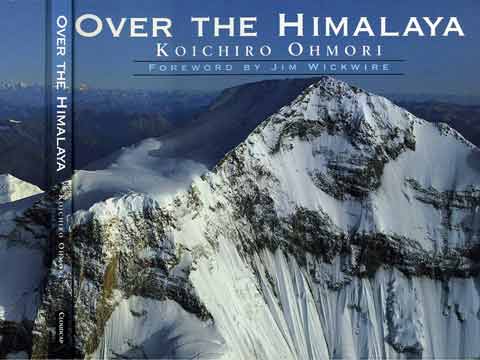
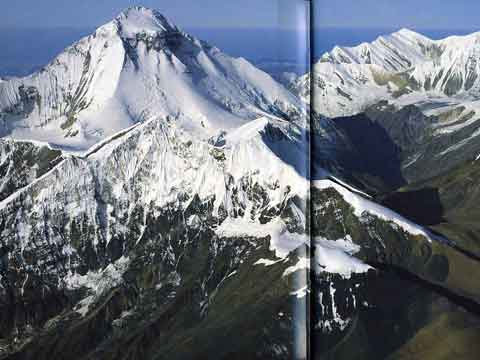

by Koichiro Ohmori. Published 1998. One of Michael Chessler's Best Mountain Photo Books. This book features 44 spectacular 2-page aerial photos of the 8000m Nepalese mountains - Kangchenjunga, Makalu, Everest and Lhotse, Cho Oyu, Manaslu, Annapurna and Dhaulagiri (cover) - and several others, including Jannu, Nuptse, and Ama Dablam. Route diagrams and some basic history of the first few ascents are also included. The front cover is Dhaulagiri.
There are five 2-page photos of the Dhaulagiri region with Dhaulagiri in four of them. Other mountains in the photos include Dhaulagiri II, III, IV, V, and VI, and the Churen Himal.
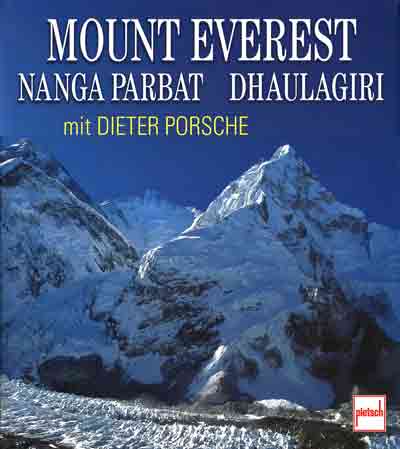
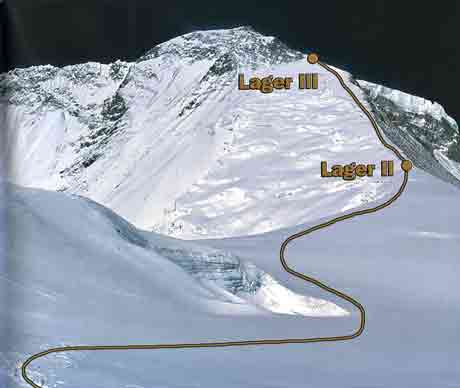


by Dieter Porsche. Published 2009 in German. This is a day by day photographic coffee-table book of Dieter Porsche's ascent of Dhaulagiri in 2003, Nangpa Parbat in1999, and Everest South Summit in 2001. Each chapter begins with a brief history of the first ascent attempts and main ascents and photos illustrating Dieter's ascent route from a distance and close up. You can see Dieter's diary and many photos from the book at alpin-extrem.de.
The Dhaulagiri chapter follows the climbers trekking from Beni to Tatopani, Dharapani, Muri, Boghara, Dobang, Choriban, and Italian Base Camp to Dhaulagiri Base Camp. After resting at base camp, they climb to Camp I (5700m), Camp II (6600m) and back to base camp. In knee-deep snow they ascend to 6300m before descending in strong winds. After waiting out the hurricane storm at base camp, they ascend to Camps I and II before descending once again to base camp in dangerous avalanche conditions. When a forecasted good weather window opens up, the team ascends once again to Camp I, II, II (7400m) and on to the summit.
On May 20, 2003 Dieter Porsche, Jochen Hasse, Christoph Von Preysing, Olaf Zill and Pemba Rinjee Sherpa reached the summit of Dhaulagiri by the normal route. On the decent Christoph and Frank Meutzner slipped and fell 600m. Although both are unharmed, Christoph is suffering acute mountain sickness and is barely responsive, and they have to drag him down. Around midnight Dieter loses sight of the others and decides to bivouac at 7800m. In the morning, with frostbitten hands and toes, Dieter makes it back to Camp III, where the others help him struggle down to base camp. A rescue helicopter takes him to Kathmandu, and the next day he flies to Germany.
Even if you can't understand German, the photos are excellent. I especially liked the detailed climbing routes, and that all aspects of the trek and climb are included, not just the highlights.
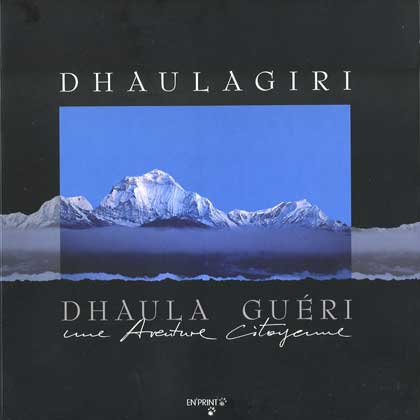
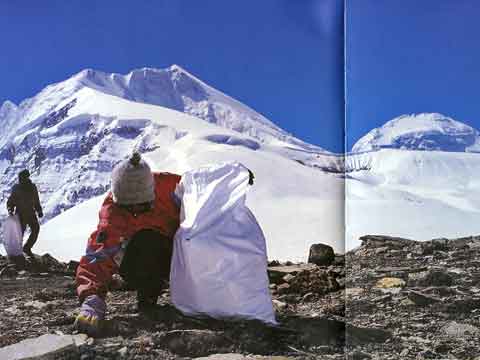
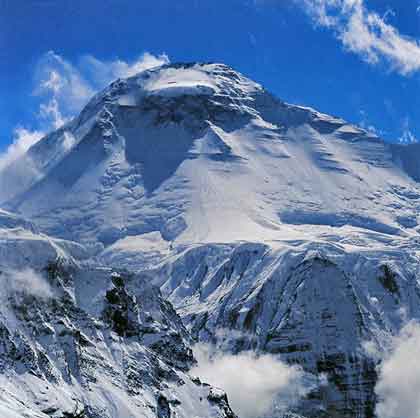

by Breffni Bolze, Lionel Fargeix, Remi Deluzarche, Cyril Kotenkoff, Matthieu Constantin, Francois-Xavier Cierco, David Amans, Carron Scrimgeour. Published 2003 in French. This is the story of a group of eight young mountaineer friends who decided to clean up Dhaulagiri North Base Camp from the waste left behind by mountaineers and trekkers.
In 2001 they traveled to Kathmandu and trekked to the Annapurna Sanctuary and Dhaulagiri North Base Camp. In 2002 they returned to Kathmandu and trekked to Hidden Valley and Muktinath. They burned 500kg of cartons, textiles and plastics; transported 122kg of metal and 80kg of glass to Pokhara to be recycled; and 20kg of batteries to France to be recycled.
Even if you can't understand French, the photos are excellent.

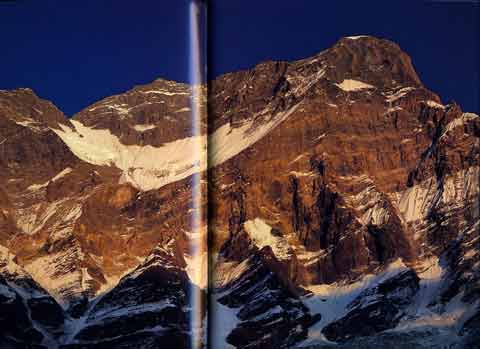
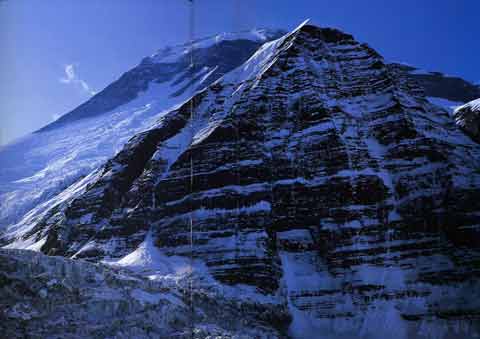

by Shiro Shirahata. Published 1983. One of Michael Chessler's Top Mountain Photo Books. A large, heavy quality paper, coffee-table type book featuring 115 spectacular photos, over half double-pages, of the 8000m Nepalese mountains - Kangchenjunga, Makalu, Everest and Lhotse (cover), Cho Oyu, Manaslu, Annapurna, Dhaulagiri - and many others, including Jannu, Nuptse, and Ama Dablam.
There are 21 pages with 13 photos of the Dhaulagiri region - three double-page photos and two single-page photos of Dhaulagiri's different faces. Other photos include Tukuche Peak and Dhaulagiri II, III, V and VI.
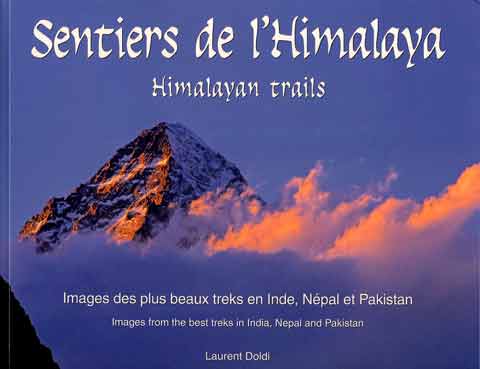
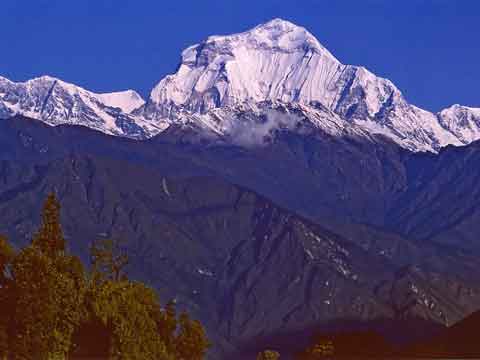

by Laurent Doldi. Published 2006. In French and English. A large soft-cover photo book detailing 10 Himalayan treks: K2 Base Camp (12 pages. 23 photos), Ladakh to Zanskar (16 pages, 38 photos), Jeep tour in Kinnaur Spiti and Ladakh (12 pages, 32 photos), the Sources of the Ganges in India (14 pages, 30 photos), Dolpo (18 pages, 36 photos), Around Annapurna (22 pages, 45 photos), Helambu and the sacred lakes of Gosainkund (16 pages, 29 photos), Rolwaling Valley in winter (18 pages, 37 photos), Everest Base Camp and Gokyo Lakes (20 pages, 41 photos), and Kangchenjunga Base Camps in Nepal (21 pages, 44 photos). Each chapter starts with a very brief overview including a map and altitude profile. The front cover is K2. There are 360 colour photos.
This is very good companion book to a trekking guide, enabling you to visualize what you will experience on a trek. The photos are very good.
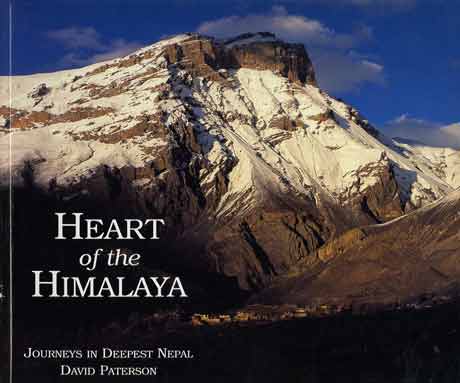
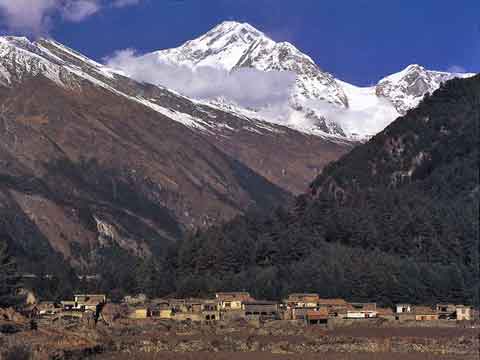

by David Paterson. First published 1997. Medium-sized soft cover book features the author’s treks to Kangchenjunga and Jannu in 1992, Kali Gandaki Valley and the Thulobugin Ridge between Dhaulagiri and Annapurna in 1996. This book also features the treks from Nepal: The Mountains Of Heaven, with some new photos and some photos the same. The front cover is the Muktinath Himal.
You can see some of David Paterson's photos at his website wildcountry.uk.com.
The photos are very good, especially Dhaulagiri from the Thulobugin Ridge high above the Kali Gandaki Valley, and from Muktinath and Poon Hill.
For news on Dhaulagiri expeditions, I check the following regularly:
There are many informational websites, with my favourites being:
There are a few expedition and trekking websites, with my favourites being:
I thoroughly enjoy reading other people's travelogues and looking through their photos. Here are my favourites:
There aren't many DVDs on Dhaulagiri. Here are the ones I found:
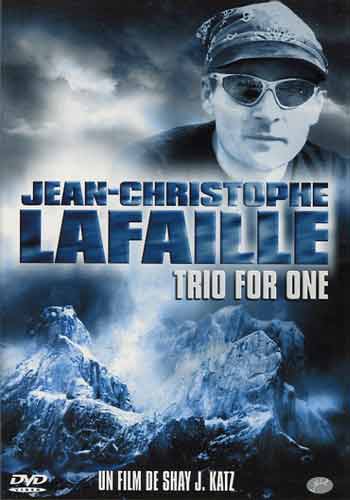
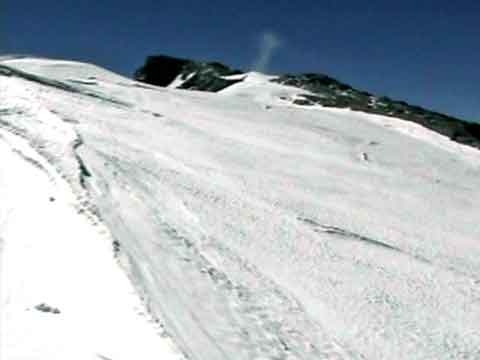
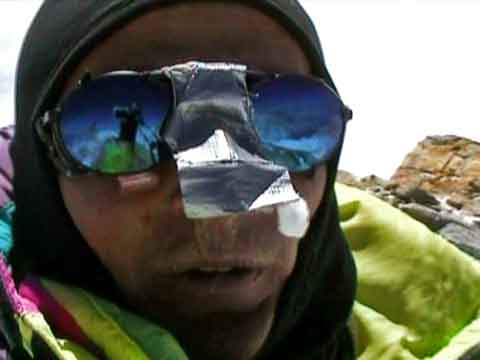

French with English subtitles. 56 minutes. Released 2005. This film follows famed French mountaineer Jean-Christophe Lafaille's exploits in 2003, climbing Dhaulagiri solo (May 20), and Nanga Parbat (June 23) and Broad Peak (July 15) with Ed Viesters. One of the bonus features is his ascent of Shishapangma (Dec 11, 2004) solo in winter. Another bonus is a 12-minute interview with JC and Ed Viesters. Lafaille disappeared on January 26, 2006 near the summit of Makalu, attempting the first solo winter ascent.
The first 16-minute chapter features Lafaille's solo climb of Dhaulagiri, filmed by JC himself. After suffering through the normal bad weather on the White Mountain, Lafaille pushed on alone without oxygen up the normal route, taking just over three days to reach the summit, and then descending to base camp the same day.
I liked the honest portrayal of a mountaineer dealing with the basics of life like shaving and eating, suffering being away from his family, dealing with the weather problems, and reaching the summit.
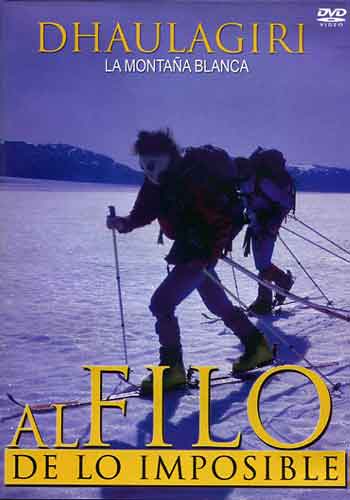
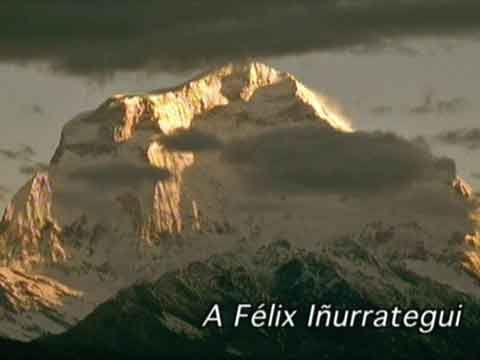
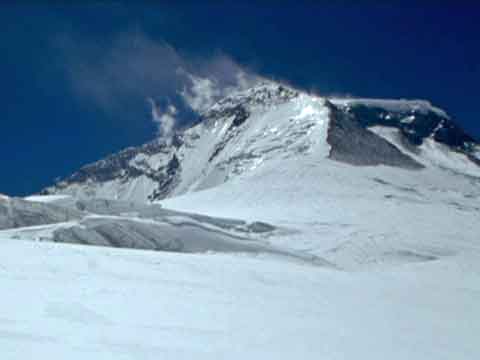

by Sebastian Alvaro. Al Filo De Lo Imposible, Spanish TV. In Spanish. 28 minutes. Filmed in 1998. Released 2001. This DVD contains two videos. The second is El Sentimiento de la Montana (2002, 63 minutes).
Dhaulagiri follows Jose Carlos Tamayo, Jon Lazcano, Juanjo San Sebastian, Alberto and Felix Inurrategui, and cameraman Antonio Perezgrueso as they attempt Dhaulagiri in 1998. The video opens with the trek to Base Camp, seeing the terrain, villages, and donkey trains. The team set up base camp and then plod up the mountain and set up the higher camps, with broad mountains views. There are a few minutes of previous expeditions of the climbers, including San Sebastian on K2.
I was disappointed that the film ended as they set up one of the higher camps. We miss what really happened on the expedition - the climbers have to deal with setbacks to establish their chain of camps. One of the high altitude camps is buried by an avalanche, forcing the climbers to retreat. Tamayo falls into a crevasse but is rescued without serious complications. The bad weather returns again ending their hopes. Eventually, when much of the expedition had abandoned their attempt, Felix and Alberto conducted a final assault and made it to the summit on May 23, 1998. Felix died descending Gasherbrum II on July 28, 2000.